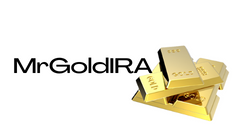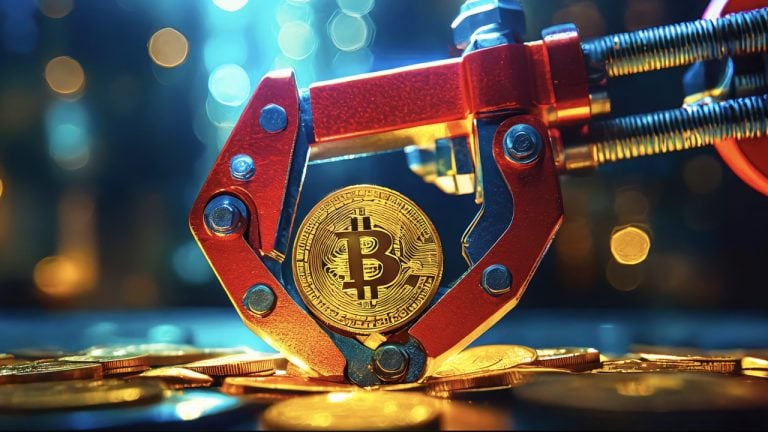
Grayscale's Bitcoin Trust, also recognized as GBTC, has recently experienced a remarkable transformation in its market dynamics. As of January 2023, GBTC was trading at a substantial 48.31% discount to its net asset value (NAV). However, this gap has now contracted to 16.59%, reflecting shifts in market sentiments and having potential repercussions for investors.
GBTC's NAV Discount Narrows Substantially by End of 2023
The most significant Bitcoin (BTC) trust, GBTC, has shown substantial progress concerning its NAV discount. Essentially, the NAV functions as a financial indicator, signifying the per-share worth of a fund's underlying assets. In GBTC's context, the NAV symbolizes the value of the BTC it possesses, adjusted for liabilities and divided by the number of its outstanding shares. In simpler terms, it's an estimation of what each GBTC share should ideally be worth based on Bitcoin's market value.
Understanding the Dynamics Between GBTC's Market Price and NAV
The market price of GBTC can deviate from its NAV, leading to either a discount or premium status. When GBTC trades at a price higher than its NAV, it's considered a premium. On the other hand, if it trades lower than its NAV, it's viewed as a discount. This percentage variance provides insights into market perceptions and investor sentiment around GBTC. Since late February 2021, GBTC has been trading at a discount to its NAV. Unlike common stocks, GBTC doesn't provide a straightforward method to redeem shares for actual Bitcoin, and shares are traded over-the-counter (OTC).
This structure can lead to its market price diverging from the underlying BTC value. External factors such as investor sentiment, market speculation, regulatory updates, and liquidity considerations can further influence this price discrepancy. A 48.31% discount in January 2023 implied that GBTC shares were trading significantly below the value of the Bitcoin they represented. Investors could have been procuring Bitcoin exposure via GBTC at a bargain.
Implications of the Shrinking NAV Discount
Fast forward to the present day, and the discount has decreased to 16.59%, hinting at a shift in market dynamics and a potential rise in demand for GBTC shares. The diminishing discount implies a likely positive shift in GBTC's market sentiment. For investors, purchasing GBTC at a discount might seem like an attractive deal, as they acquire exposure to BTC at a lower price. However, the future remains uncertain, and there's no assurance that the discount will continue to narrow at the same rate or even flip to a premium.
Grayscale's Future Moves for GBTC
Currently, Grayscale is ardently striving to convince the U.S. Securities and Exchange Commission (SEC) to convert GBTC into an exchange-traded fund (ETF). With a slight push from the judiciary, Grayscale has managed to create a small leeway in this endeavor, but the final decision is still up in the air. Concurrently, the SEC is scrutinizing over half a dozen spot Bitcoin ETF proposals from industry titans such as Fidelity, Blackrock, and Franklin Templeton.
What are your thoughts about the tightening of GBTC's discount? We welcome your thoughts and opinions on this topic.
Frequently Asked Questions
Is gold a good choice for an investment IRA?
For anyone who wants to save some money, gold can be a good investment. You can also diversify your portfolio by investing in gold. But gold has more to it than meets the eyes.
It's been used throughout history as a currency, and even today, it remains a popular form of payment. It's often referred to as “the world's oldest currency.”
But gold, unlike paper currency, which is created by governments, is mined out from the ground. Because it is rare and difficult to make, it is extremely valuable.
The supply and demand factors determine how much gold is worth. The economy that is strong tends to be more affluent, which means there are less gold miners. As a result, the value of gold goes up.
On the other hand, people will save cash when the economy slows and not spend it. This increases the production of gold, which in turn drives down its value.
This is why it makes sense to invest in gold for individuals and companies. If you make an investment in gold, you can reap the economic benefits whenever the economy is growing.
In addition to earning interest on your investments, this will allow you to grow your wealth. You won't lose your money if gold prices drop.
What are the pros & con's of a golden IRA?
An Individual Retirement account (IRA) is a better option than regular savings accounts in that interest earned is exempted from tax. This makes an IRA a great choice for people who are looking to save money but don’t want to pay any tax on the interest earned. This type of investment has its downsides.
You may lose all your accumulated savings if you take too much out of your IRA. The IRS may prohibit you from withdrawing funds from your IRA before you are 59 1/2 years of age. If you do withdraw funds, you'll need to pay a penalty.
Another disadvantage is that you must pay fees to manage your IRA. Many banks charge between 0.5%-2.0% per year. Others charge management fees that range from $10 to $50 per month.
Insurance is necessary if you wish to keep your money safe from the banks. Most insurers require you to own a minimum amount of gold before making a claim. Insurance that covers losses upto $500,000.
If you choose to go with a gold IRA, you'll need to determine how much gold you want to use. Some providers limit how many ounces you can keep. Others let you choose your weight.
You'll also need to decide whether to buy physical gold or futures contracts. Physical gold is more expensive than gold futures contracts. However, futures contracts give you flexibility when buying gold. You can set up futures contracts with a fixed expiration date.
You also need to decide the type and level of insurance coverage you want. The standard policy doesn’t provide theft protection or loss due fire, flood, or earthquake. It does offer coverage for natural disasters. If you live in a high-risk area, you may want to add additional coverage.
You should also consider the cost of storage for your gold. Storage costs are not covered by insurance. In addition, most banks charge around $25-$40 per month for safekeeping.
Before you can open a gold IRA you need to contact a qualified Custodian. A custodian is responsible for keeping track of your investments. They also ensure that you adhere to federal regulations. Custodians aren't allowed to sell your assets. Instead, they must retain them for as long and as you require.
Once you've chosen the best type of IRA for you, you need to fill in paperwork describing your goals. You must include information about what investments you would like to make (e.g. stocks, bonds and mutual funds). It is also important to specify how much money you will invest each month.
After filling in the forms, please send them to the provider. After reviewing your application, the company will send you a confirmation mail.
When opening a gold IRA, you should consider using a financial planner. Financial planners are experts in investing and will help you decide which type of IRA works best for your situation. You can also reduce your insurance costs by working with them to find lower-cost alternatives.
How much are gold IRA fees?
A monthly fee of $6 for an Individual Retirement Account is charged. This includes account maintenance fees and investment costs for your chosen investments.
Diversifying your portfolio may require you to pay additional fees. These fees can vary depending on which type of IRA account you choose. Some companies offer free checking accounts, but charge monthly fees to open IRA accounts.
Many providers also charge annual management fees. These fees vary from 0% to 11%. The average rate is.25% each year. These rates can be waived if the broker is TD Ameritrade.
How to Open a Precious Metal IRA
First, you must decide if your Individual Retirement Account (IRA) is what you want. You must complete Form 8606 to open an account. You will then need to complete Form 5204 in order to determine which type IRA you are eligible. This form should be filled within 60 calendar days of opening the account. Once you have completed this form, it is possible to begin investing. You may also choose to contribute directly from your paycheck using payroll deduction.
Complete Form 8903 if your Roth IRA option is chosen. Otherwise, the process is identical to an ordinary IRA.
To qualify for a precious Metals IRA, there are specific requirements. The IRS requires that you are at least 18 years old and have earned an income. For any tax year, your earnings must not exceed $110,000 ($220,000 for married filing jointly). And, you have to make contributions regularly. These rules apply regardless of whether you are contributing directly to your paychecks or through your employer.
An IRA for precious metals allows you to invest in gold and silver as well as platinum, rhodium, and even platinum. You can only purchase bullion in physical form. This means you won’t be able to trade stocks and bonds.
Your precious metals IRA can be used to directly invest in precious metals-related companies. This option can be provided by some IRA companies.
However, there are two significant drawbacks to investing in precious metals via an IRA. First, they are not as liquid or as easy to sell as stocks and bonds. This makes it harder to sell them when needed. They also don't pay dividends, like stocks and bonds. Therefore, you will lose more money than you gain over time.
Should You Open a Precious Metal IRA?
It is essential to be aware of the fact that precious metals do not have insurance coverage before opening an IRA. If you lose money in your investment, nothing can be done to recover it. This includes losing all your investments due to theft, fire, flood, etc.
You can protect yourself against such losses by purchasing physical gold and silver coins. These items can be lost because they have real value and have been around for thousands years. If you were to sell them today, you would likely receive more than what you paid for them when they were first minted.
Consider a reputable business that offers low rates and good products when opening an IRA. A third-party custodian is a good option. They will protect your assets while giving you easy access whenever you need them.
You won't get any returns until you retire if you open an account. So, don't forget about the future!
Statistics
- You can only purchase gold bars at least 99.5% purity. (forbes.com)
- (Basically, if your GDP grows by 2%, you need miners to dig 2% more gold out of the ground every year to keep prices steady.) (smartasset.com)
- If you take distributions before hitting 59.5, you'll owe a 10% penalty on the amount withdrawn. (lendedu.com)
- Instead, the economy improved, stocks rebounded, and gold plunged, losing 28 percent of its value in 2013. (aarp.org)
- If you accidentally make an improper transaction, the IRS will disallow it and count it as a withdrawal, so you would owe income tax on the item's value and, if you are younger than 59 ½, an additional 10% early withdrawal penalty. (forbes.com)
External Links
finance.yahoo.com
irs.gov
cftc.gov
wsj.com
- Saddam Hussein’s InvasionHelped Uncage a Bear In 1989 – WSJ
- Want to Keep Gold in Your IRA at Home? It's Not Exactly Lawful – WSJ
How To
3 Ways To Invest in Gold For Retirement
It's essential to understand how gold fits into your retirement plan. You can invest in gold through your 401(k), if you have one at work. You might also consider investing in gold outside your workplace. For example, if you own an IRA (Individual Retirement Account), you could open a custodial account at a brokerage firm such as Fidelity Investments. If precious metals aren't your thing, you may be interested in buying them from a dealer.
These are the three rules to follow if you decide to invest in gold.
- You can buy gold with your cash – No need to use credit cards or borrow money for investment financing. Instead, instead, transfer cash to your accounts. This will protect your against inflation and increase your purchasing power.
- Physical Gold Coins: You should own physical gold coins, not just a certificate. Physical gold coins can be sold much faster than paper certificates. There are no storage fees for physical gold coins.
- Diversify Your Portfolio. – Do not put all your eggs into one basket. Also, diversify your wealth and invest in different assets. This helps to reduce risk and provides more flexibility when markets are volatile.
—————————————————————————————————————————————————————————————-
By: Jamie Redman
Title: Grayscale's Bitcoin Trust Sees a Decline in its NAV Discount to 16.59%
Sourced From: news.bitcoin.com/grayscales-bitcoin-trust-discount-to-nav-narrows-sharply-to-a-16-59-gap/
Published Date: Fri, 13 Oct 2023 16:30:29 +0000



















